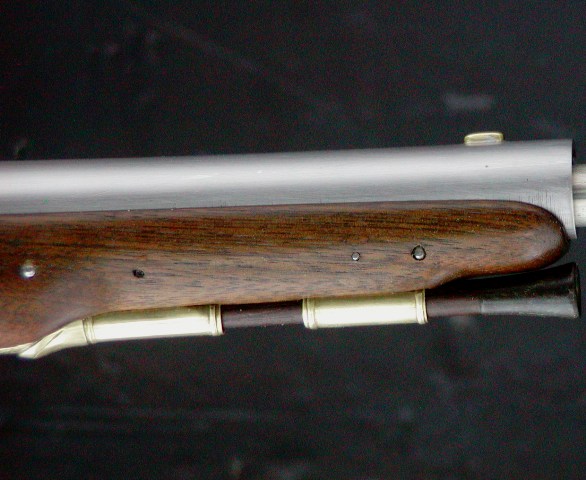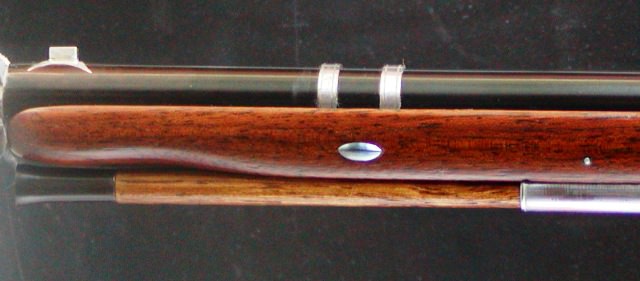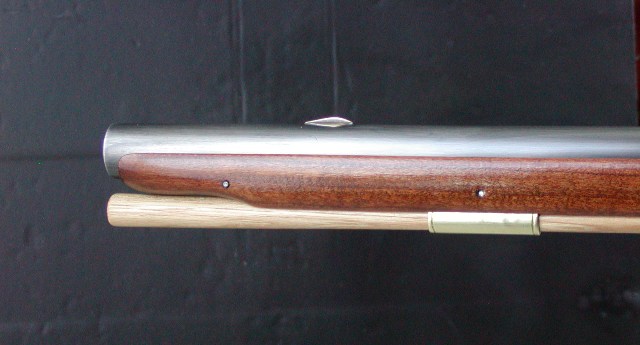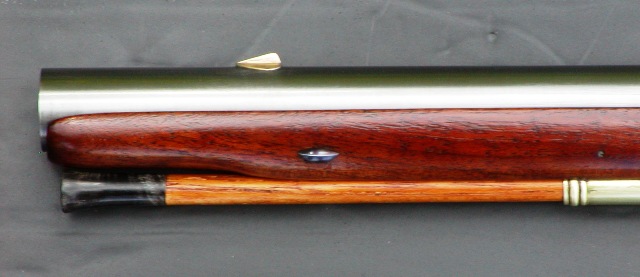Sorry if this is a silly question, but I don’t think so. What size tip do I want to order for my rod (get your mind out of the gutter)? Are the measurements shown on say October Country for replacement tips ID or OD? If I order a 3/8” tip for a 3/8” rod will it slip right on or do I turn the end of the rod down so the OD is flush when completed? Thanks.
-
Friends, our 2nd Amendment rights are always under attack and the NRA has been a constant for decades in helping fight that fight.
We have partnered with the NRA to offer you a discount on membership and Muzzleloading Forum gets a small percentage too of each membership, so you are supporting both the NRA and us.
Use this link to sign up please; https://membership.nra.org/recruiters/join/XR045103
You are using an out of date browser. It may not display this or other websites correctly.
You should upgrade or use an alternative browser.
You should upgrade or use an alternative browser.
Rod tip size question
- Thread starter Timber Wolf
- Start date

Help Support Muzzleloading Forum:
This site may earn a commission from merchant affiliate
links, including eBay, Amazon, and others.
Alexander Efremenko
40 Cal
- Joined
- Mar 3, 2019
- Messages
- 170
- Reaction score
- 205
3/8 would be the outside diameter of the fitting. Wood would have to be removed to insert it into the fitting.
I make my 3/8 dia RRs approx .005 undersize for the entire length and the 2 RR tips likewise....the tip that goes into the hole has a long lead in for easy insertion. On RRs that have only one tip., the muzzle end of the RR has a flare to 7/16 dia.....Fred
kansas_volunteer
45 Cal.
I'm of the opinion that ramrod tips should not flare. That is a 3/8ths rod ought to be 3/8ths its entire length. If you put a flared tip on the rod, and pipes and ramrod channel normally sized the rod can only go in one way, with flared end at the muzzle. That means to use the rod you must pull it all the way out, turn it end-for-end ram the ball, pull it out of the barrel and turn it end-for-end again and then put it back in place.
If the rod is the same diameter for its entire length the normall brass tip can be inserted into the pipes and channle first, which allows this to happen: the rod is withdrawn the brass tip move about an inch to ram the ball, when that is done it is moved over about an inch to be replaced in the channel and pipes. It eleminates all that flipping around and waving of the ramrod that must be done if the tip is flared. It makes for faster reloads. It's just more efficient.
If the rod is the same diameter for its entire length the normall brass tip can be inserted into the pipes and channle first, which allows this to happen: the rod is withdrawn the brass tip move about an inch to ram the ball, when that is done it is moved over about an inch to be replaced in the channel and pipes. It eleminates all that flipping around and waving of the ramrod that must be done if the tip is flared. It makes for faster reloads. It's just more efficient.
Some old-time ramrods with flared ends have convex tips, not concave to fit the ball. It is possible that this may have been a built-in "palm saver," so the driving end would have been the end that was inside the stock when the rod was in place in the ferrules. It could theoretically been withdrawn and inserted to ram the ball as kansas_volunteer describes. I think Don Bruton may have addressed this in his shooting video. This would certainly not have been a universal practice, though.I'm of the opinion that ramrod tips should not flare. That is a 3/8ths rod ought to be 3/8ths its entire length. If you put a flared tip on the rod, and pipes and ramrod channel normally sized the rod can only go in one way, with flared end at the muzzle. That means to use the rod you must pull it all the way out, turn it end-for-end ram the ball, pull it out of the barrel and turn it end-for-end again and then put it back in place.
If the rod is the same diameter for its entire length the normall brass tip can be inserted into the pipes and channle first, which allows this to happen: the rod is withdrawn the brass tip move about an inch to ram the ball, when that is done it is moved over about an inch to be replaced in the channel and pipes. It eleminates all that flipping around and waving of the ramrod that must be done if the tip is flared. It makes for faster reloads. It's just more efficient.
I like to make ramrod a to fit the gun. For flintlocks with two lock bolts, it is very common for the forward lock bolt to impinge on the ramrod channel and bind up an un tapered rod. Tapering the last few inches of the rod down to a slightly smaller diameter eliminates the problem. The body of the rod should fit the ramrod pipes... Not too tight, not too loose... and would generally have been untapered. The "head" of the rod, which does not have to pass through the ramrod ferrules, can be left a slightly larger diameter.
I think the point kansas_volunteer may have been making was that a rod of uniform diameter could be inserted in the ramrod channel, through the ferrules, withe either end of the rod going in first. This would certainly be efficient. However, most of the few surviving original wood rods I have seen had at least some taper. Iron rods in military guns and rifles, as far as I know, universally had a swell or "button" on one end.
Interesting discussion.
Best regards,
Notchy Bob
- Joined
- Nov 26, 2005
- Messages
- 5,225
- Reaction score
- 10,887
Hi,
Tapered rods allow for slimmer guns and I never find a flared tip to slow me down loading. Nice swells and flared tips on ram rods really look nice as well, particularly if the web of wood between the barrel and ramrod channel is thin so there is no ugly gap between the rod and the stock at the muzzle.






dave
Tapered rods allow for slimmer guns and I never find a flared tip to slow me down loading. Nice swells and flared tips on ram rods really look nice as well, particularly if the web of wood between the barrel and ramrod channel is thin so there is no ugly gap between the rod and the stock at the muzzle.






dave
I make a 7/16 rod and then scrape the rest down to fit the 3/8 pipes. Leaving a bulged end. Just made a horn tip for my FDC


Last edited by a moderator:
Col. Batguano
75 Cal.
- Joined
- Feb 10, 2011
- Messages
- 5,039
- Reaction score
- 1,424
A bit off topic, but related;
Has anyone driven a ball all the way home, pulled the plug and driven it through to see just how much ball deformation happens during the loading process? Or how much that flat sprue gets mashed down too. Pictures would be very educational. Obviously, the amount of deformation will vary with your loading technique, tip shape, and pressure.
Has anyone driven a ball all the way home, pulled the plug and driven it through to see just how much ball deformation happens during the loading process? Or how much that flat sprue gets mashed down too. Pictures would be very educational. Obviously, the amount of deformation will vary with your loading technique, tip shape, and pressure.
Every ball I’ve pulled has been scared up by the ball screw.
I have loaded in reached barrels and the ball drops out pretty clean looking that I shot them latter when the gun was finished.
I have loaded in reached barrels and the ball drops out pretty clean looking that I shot them latter when the gun was finished.
Never all the way. But many times in deciding what ball size to try I would use a large patch, drive the ball about 1" down the bore the pull it back out. That way I could see if the rifling was properly grabbing the ball. And, yes, the front was deformed. I have always contended that we do not shoot round balls but we do load them.
ohio ramrod
75 Cal.
- Joined
- Aug 21, 2008
- Messages
- 7,473
- Reaction score
- 2,209
I put concave tips on all of my ramrods to prevent flatening the ball. As a machinist it wasn't hard for me to make the tooling so that I had the radius of the ball. Also I radius the short starters.
Similar threads
- Replies
- 8
- Views
- 661
- Replies
- 3
- Views
- 767
- Replies
- 13
- Views
- 1K



